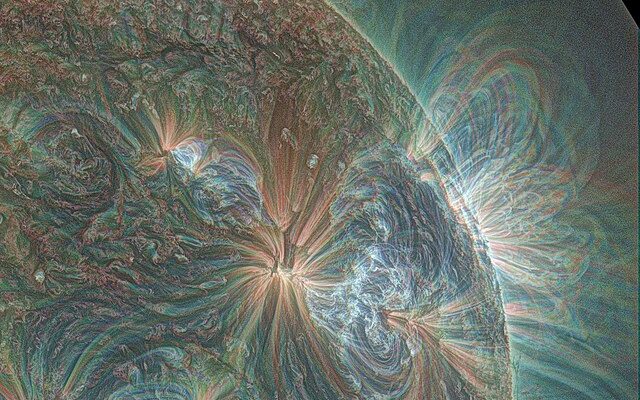
In a frightening display of how small we are compared to the power of the Sun, researchers analyzing the growth rings in ancient trees say that they have found evidence of a “cataclysmic” solar storm slamming into the planet 14,300 years ago. The evidence should add fuel to the conversation about the ways modern society should prepare for such solar flares in the future.
In a new study published Oct. 9 in the journal Philosophical Transactions of the Royal Society A: Mathematical Physical and Engineering Sciences, researchers analyzed tree rings cut from subfossil, or partially fossilized, tree stumps in the French Alps. The ancient trees, which were preserved by the sediment of a river bed, all have high levels of radiocarbon in a single year’s ring dating to roughly 14,300 years ago, writes Live Science.
Radiocarbon, or carbon-14, is an isotope of carbon with extra neutrons and is produced when cosmic rays hit nitrogen atoms in the atmosphere. High radiocarbon levels in a tree ring suggest there was a spike in cosmic rays around that time. The time the spikes occurred in these rings matches findings from ice cores that were recently unearthed in Greenland, which showed high levels of the element beryllium from the same period. Beryllium is most commonly created by cosmic rays slamming into the nuclei of other elements.
Researchers think the radiation spike came from a massive solar storm, most likely triggered by a fast-moving cloud of magnetized plasma and radiation known as a coronal mass ejection (CME) that was launched into space by a humongous solar flare. What the gigantic storm would have looked like is beyond our current comprehension.
If true, it would make the storm “the biggest ever identified” coming from the sun, the researchers wrote in an email statement. “A similar solar storm today would be catastrophic for modern technological society,” they added.
At irregular intervals, our planet has been exposed to influxes of charged particles stemming from solar flares or eruptions. These occurrences are responsible for triggering polar auroras, disturbing communication systems, or inflicting minor harm on satellites. The exreme versions, such as the ones described by the Royal Society, are labeled as “Miyake events,” named after the Japanese physicist Fusa Miyake, whose team was the first one to identify these annual radiocarbon spikes and published the results in 2012 in the journal Nature.
“Radiocarbon is constantly being produced in the upper atmosphere through a chain of reactions initiated by cosmic rays.” Edouard Bard, lead author of the study, said in a statement.
Bard said, “Recently, scientists have found that extreme solar events including solar flares and coronal mass ejections can also create short-term bursts of energetic particles which are preserved as huge spikes in radiocarbon production occurring over the course of just a single year.”
Mashable reported that “taken together with similar evidence preserved in deep Greenland ice cores, researchers show compelling evidence of a colossal solar blast. The research was published in the science journal The Royal Society’s Philosophical Transactions A: Mathematical, Physical and Engineering Sciences.
‘Extreme solar storms could have huge impacts on Earth. Such super storms could permanently damage the transformers in our electricity grids, resulting in huge and widespread blackouts lasting months,’ Tim Heaton, a professor of Applied Statistics in the School of Mathematics at the University of Leeds who worked on the research, said in a statement.
For example, although not the same type of solar storm, an eruption of hot gas (called a coronal mass ejection, or CME) from the sun impacted Earth in 1989. The results were extreme, knocking out power to millions in Québec, Canada. The CME hit Earth’s magnetic field on March 12 of that year, and then, wrote NASA astronomer Sten Odenwald, “Just after 2:44 a.m. on March 13, the currents found a weakness in the electrical power grid of Québec. In less than two minutes, the entire Québec power grid lost power. During the 12-hour blackout that followed, millions of people suddenly found themselves in dark office buildings and underground pedestrian tunnels, and in stalled elevators.”
We shouldn’t worry too much, however. There have only been nine such extreme solar storms over the last 15,000 years.
The most recent confirmed Miyake Events occurred in 993 AD and 774 AD, according to The National. We aren’t due for one for quite some time.
[Read More: Astronomers Discover The First Moments Of The Universe]









